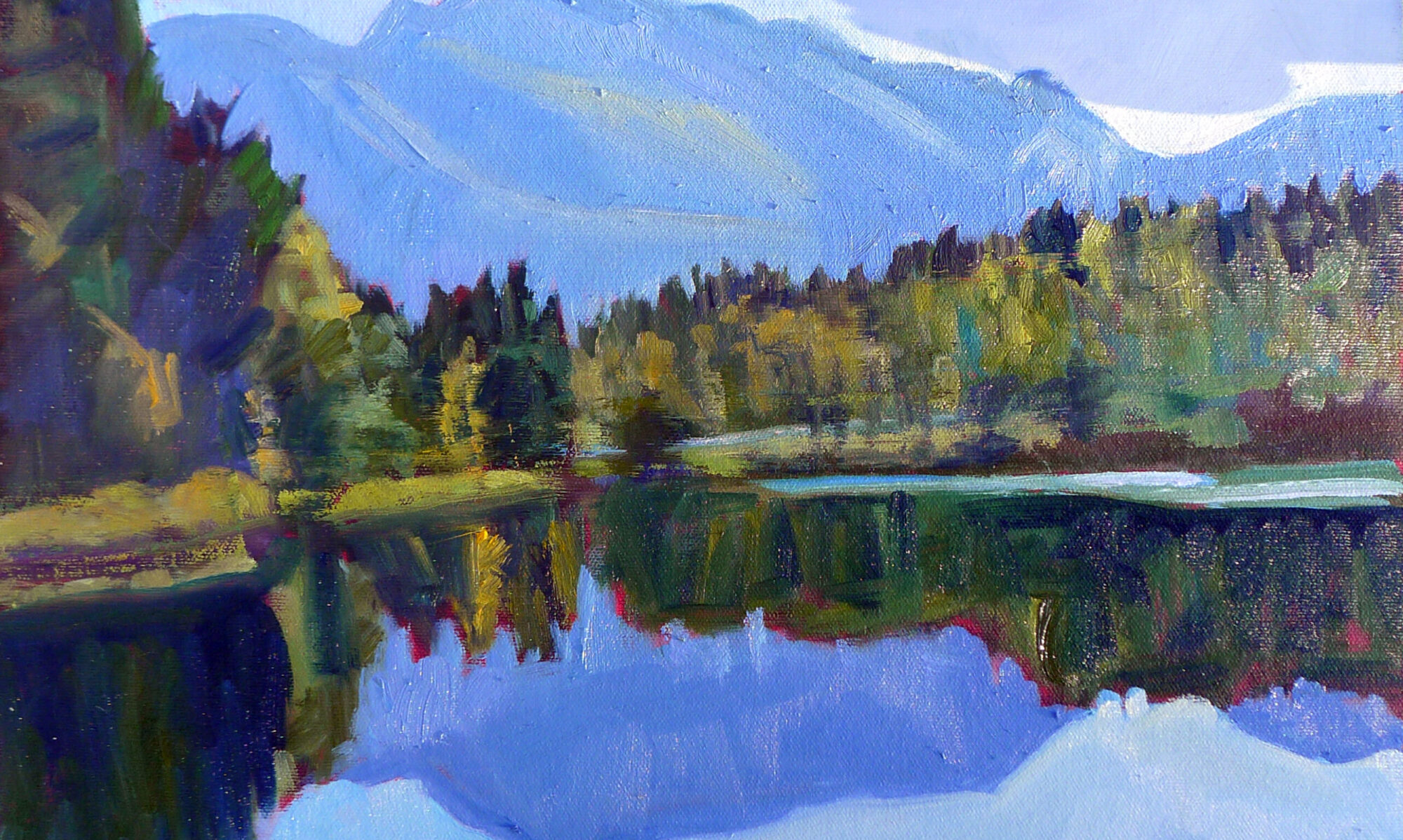The joys of a beach vacation: drying towels and an old-fashioned ice cream parlor.
 |
| Drying towels, by Carol L. Douglas |
Cheney Cottage, built in 1881, is now owned by the Ocean Park Association. It includes the Prophet’s Chamber, where the guest preacher stays. A shuffleboard court graces the side lawn; it’s run by a fifth generation Ocean Parker. The rambling old cottage itself is holiday housing.
Accompanied by early-morning birdsong, I strolled down Temple Avenue. I was looking for a streetscape that would capture the leafy greens, genteel architecture and relaxed summer feel of Ocean Park. Bright drying towels on the rail at Cheney Cottage caught my eye. They reminded me of summer trips to Maine when my kids were young.
As always, I did a value sketch before I started. From there I transferred my drawing to a 9X12 canvasboard. I frowned; it was too small. I decided to scale it up to 11X14.
I must have needed more coffee or something, because when I was done, the house was the same size as on the 9X12, but with more foreground showing.
The temptation in this situation is to add an object to the foreground to fix the bad design. I experimented with a figure, but it didn’t work. Adding objects as an afterthought usually makes things worse, drawing the eye away from the primary subject.
No matter; the house sits under great mature spruces, so the lawn was dappled with light and shadow. Having more foreground turned out to be no problem at all.
One of the great joys of plein air painting is the people you meet along the way. Cheney Cottage is currently occupied by an extended family who vacation together every year. Many of them stopped to see what I was doing. I spoke with an aunt who now stays across the street. As the family grows, there’s no longer room for them all in the old place.
 |
| The composition that was not to be. |
I’m staying in the “new” part of the park, where cottages date from the 1920s and 1930s. In some ways, the character of Ocean Park—like everywhere—is inexorably changing. A long-term resident lamented the new builds in town. “Someday, all the old places will be gone,” she said. But not any time soon, thank goodness.
In the afternoon, I revisited a subject I’ve painted twice before: the
Ocean Park Ice Cream Parlor. Here in southern Maine, the land is low, level and sandy. That makes wandering around with one’s gear easier, but it makes sight lines more challenging.
 |
| It helps to know perspective drawing, even when you’re feeling expressive. |
No matter what angle I choose, the foundation of the ice cream parlor remains resolutely parallel to my picture plane. I’d
explored the possibilities of that on Sunday with my surf painting, I didn’t want to do it again. I set up about three different paintings and wiped them out. Then a couple stopped to read the outside menu board. Idly, I sketched them on my canvas. I liked them, and built the rest of the painting to support them.
Over the afternoon, my figures morphed into a father and a child, and another person materialized. By 4 PM, both the painting and I were done.
 |
| What’s for lunch? by Carol L. Douglas |
In the evening we had a lively reception for the artists. I went home to nap, intending to go out with
Russel Whitten to do a nocturne. But when I awoke at 8:15, my eyes were nearly as red as my shirt. I went back to sleep.
This morning, the fog is not limited to my head. Fog makes for good painting, so I’m heading out in a few minutes. If you’re in southern Maine this morning, stop to see me. You can get directions at Jakeman Hall, at 14 Temple Avenue.
























